Having completed a full-gut kitchen renovation begun during Covid, I needed to add one last piece to the puzzle: a dining table and chairs. An L-shaped diner-style booth was planned, but the reality of the space did not match the dream. At just 70 in. by 41 in., it was too small by half. The seating plan was changed to a bench and two chairs.
First, I built the bamboo-plywood storage bench. Notched so the feet of a trestle table can slide in to save space, the design angles to make room for a sitter’s feet. Next, I glued up the tabletop. When I mocked it up on sawhorses, the undercut angle screamed at me; I turned the horses 90° and saw there was more space to be saved. I redesigned the trestles cantilevered to match the angle of the bench. With the new setup, my already-glued-up table could be larger.
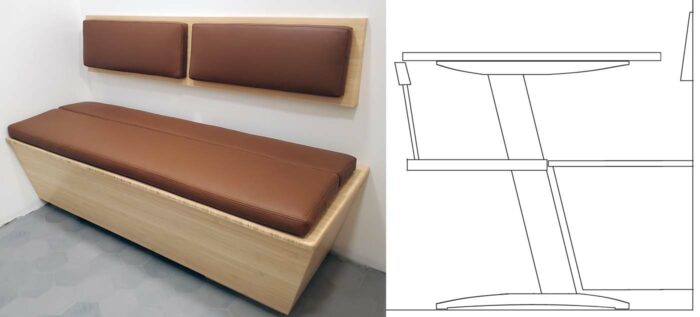
The solution to stretch the table added wide breadboard ends using a hybrid joint design that combined sliding dovetails, loose tenons, and a tongue-and-groove joint. If you’re curious, you can see it on the Tailspin Tools Blog. I think it’s pretty cool that the table’s center of gravity turned out perfectly balanced when the table is lifted by the ends.
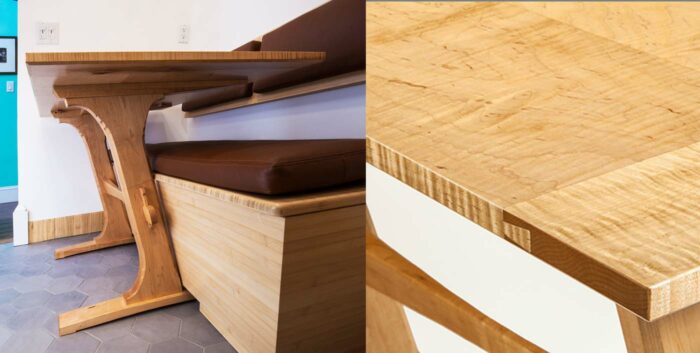
Last up was my first try at stick chairs. I had a chunk of cherry log sliced up and air dried in the garage. It came straight off a Woodmizer at a 2017 fundraising event for the North Jersey Woodworkers Association. I moved the lumber into the shop, bought a copy of Christopher Schwarz’s Stick Chair Book and a Tim Manney reamer. I did a little testing and then went for it.

About halfway done, I passed two chairs curbside and took one home. The size was close enough to use for testing and proved that two chairs side by side could not be pushed all the way in. There was huge value in having something to hack on without hesitation. I cut a fat notch in the seat and found it had no effect on comfort.
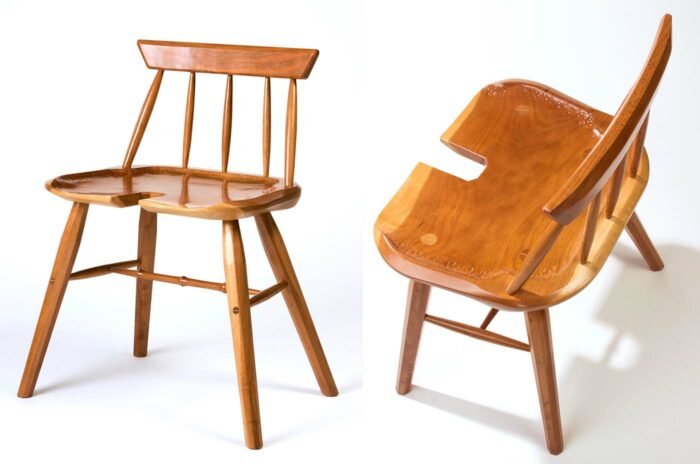
Making the theoretical decision to notch the chairs was easy; taking my first-ever carved seats to the bandsaw was not! A little redesign was needed to tweak the fit. I lowered the backs an inch and flattened the saddles a touch. They sit comfortably and fit the space beautifully.
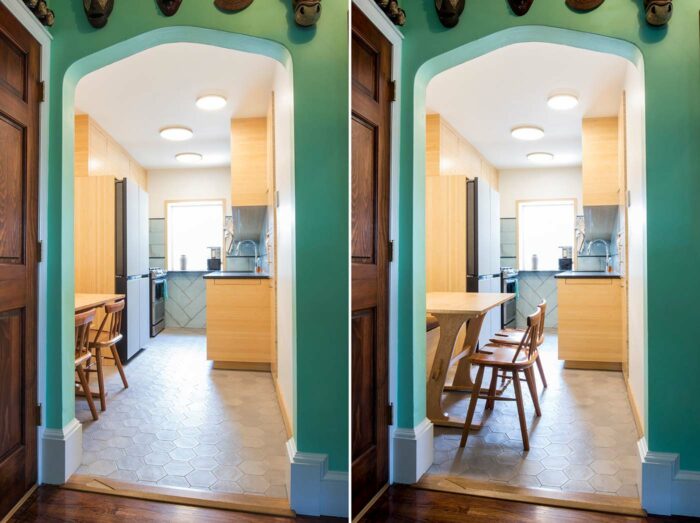
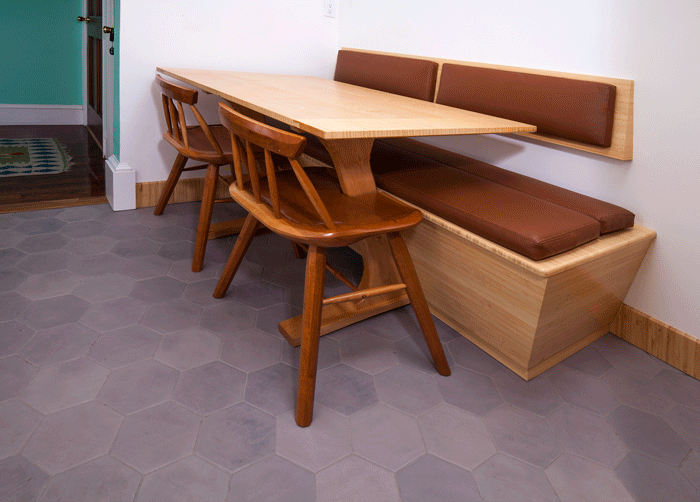
After 35 years in architectural photography, Myko now works as a consultant, employing the same skill set toward environmental compliance. He holds three U.S. patents and is the inventor and manufacturer of Tailspin Collinear Marking Tools. A woodworker of 50 years, he got started with an X-Acto carving set and a block of balsa on his 10th birthday and just kept going.
Sign up for eletters today and get the latest techniques and how-to from Fine Woodworking, plus special offers.

